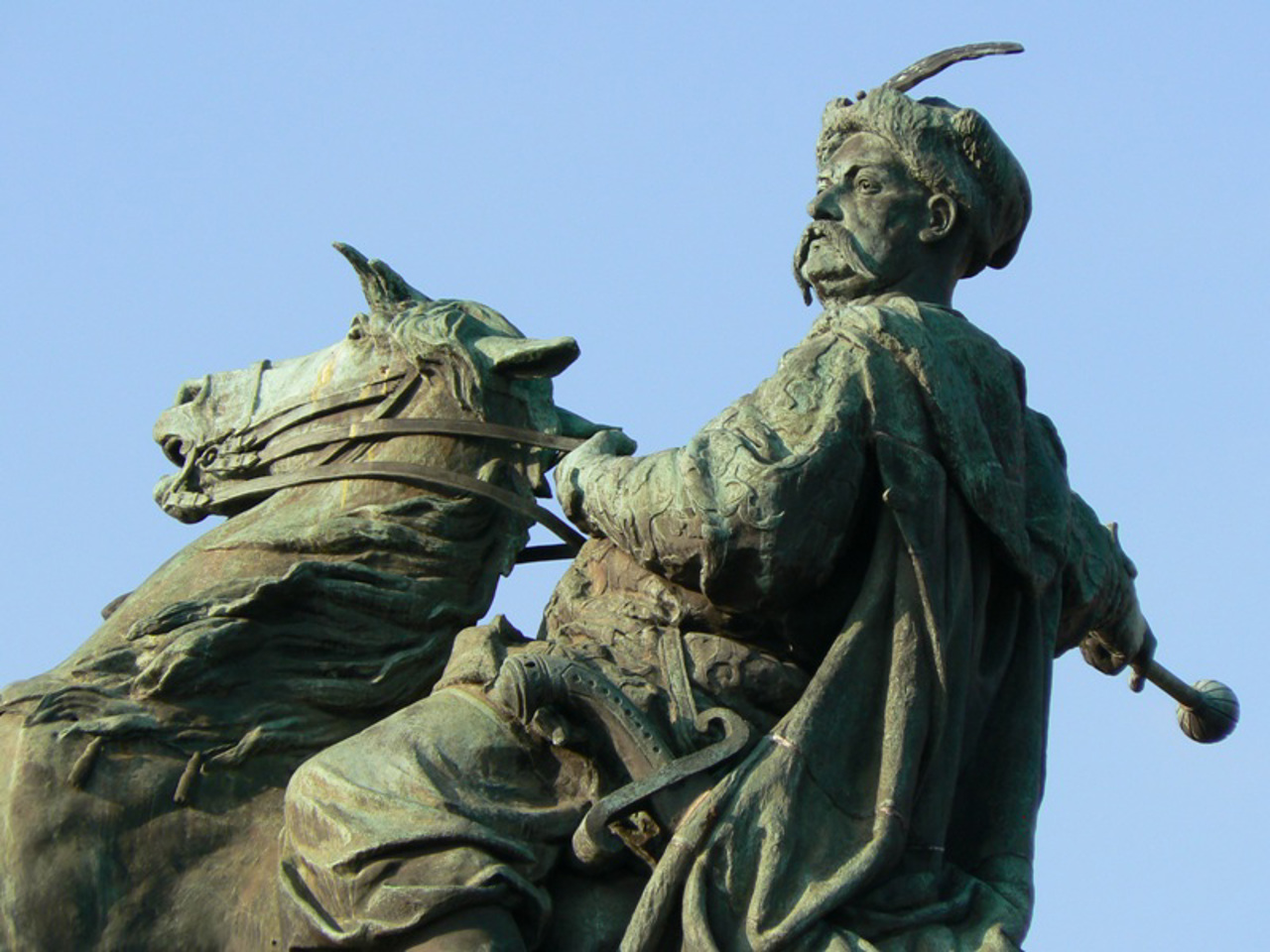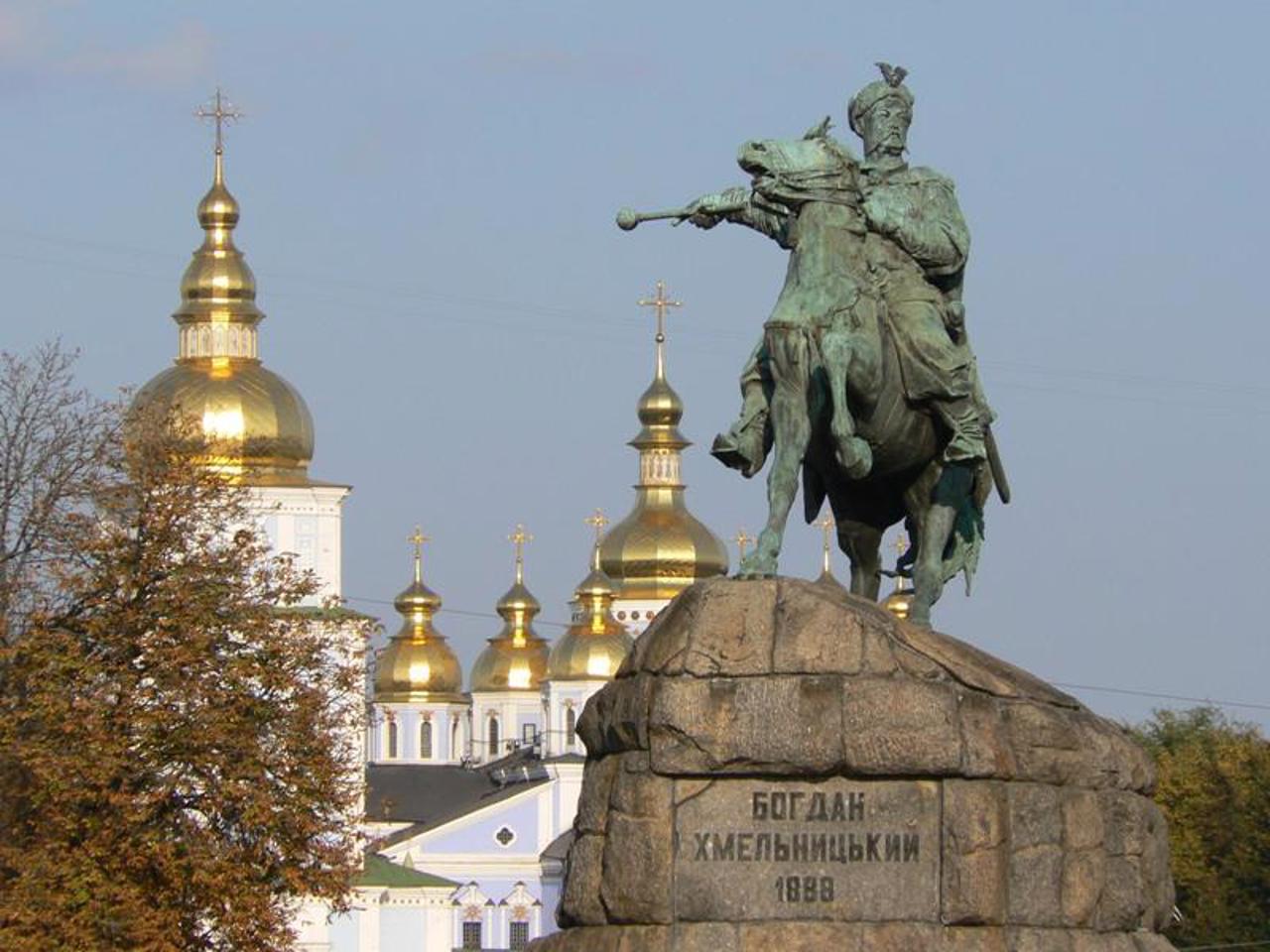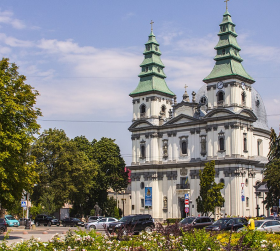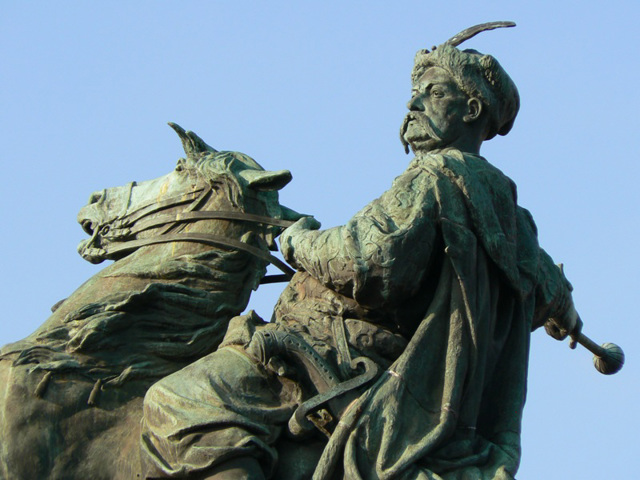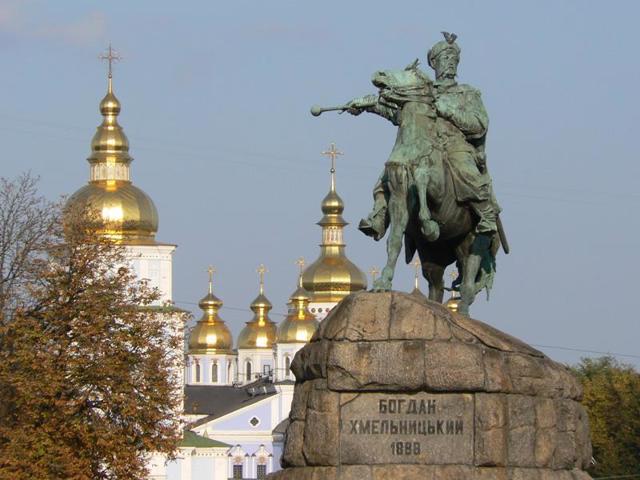Functional temporarily unavailable
Bohdan Khmelnitsky Monument, Kyiv
Monument
General information about Bohdan Khmelnitsky Monument (Kyiv)
The monument to Hetman Bohdan Khmelnytskyi is one of the oldest and most outstanding city monuments, a business card of Kyiv.
The idea of its installation belongs to professor Mykhaylo Maksymovych, historian Mykola Kostomarov, poet Mykhaylo Yuzefovych and artist Mykhaylo Mykeshin, who convinced Tsar Oleksandr II to start collecting donations for the monument "to the one who returned the Kiev shrine to the Rus people, who saved, perhaps, Orthodoxy on the banks of the Dnipro".
The multi-figure composition of the monument conceived by Mykeshin had to be greatly simplified for financial and political reasons, excluding anti-Polish and anti-Semitic elements. The idea was embodied in bronze by sculptors Pius Velionskyi and Artemiy Ober.
The city authorities decided ...
The monument to Hetman Bohdan Khmelnytskyi is one of the oldest and most outstanding city monuments, a business card of Kyiv.
The idea of its installation belongs to professor Mykhaylo Maksymovych, historian Mykola Kostomarov, poet Mykhaylo Yuzefovych and artist Mykhaylo Mykeshin, who convinced Tsar Oleksandr II to start collecting donations for the monument "to the one who returned the Kiev shrine to the Rus people, who saved, perhaps, Orthodoxy on the banks of the Dnipro".
The multi-figure composition of the monument conceived by Mykeshin had to be greatly simplified for financial and political reasons, excluding anti-Polish and anti-Semitic elements. The idea was embodied in bronze by sculptors Pius Velionskyi and Artemiy Ober.
The city authorities decided to place the monument on Sofiyivska Square, where in 1648 the people of Kyiv met the Cossack regiments led by Khmelnitsky, who entered the city after the victory over the Polish nobility. Eight years were spent on disputes about the place of installation and placement of the monument, as a result of which the hetman began to "threaten" with his mace not Warsaw, but somewhere in the direction of Moscow. Only in 1886, the architect Volodymyr Mykolayiv began the construction of a pedestal from granite blocks that remained after the construction of the pillars of the Lantsyuhovy Bridge.
The opening of the monument took place on the day of the 900th anniversary of the baptism of Rus.
After the Bolshevik coup of 1917, the inscription on the pedestal "We want an Eastern, Orthodox tsar" and "Bohdan Khmelnytskyi, one indivisible Russia" were replaced by one laconic one: "Bohdan Khmelnytskyi. 1888."
Since that time, the square around the monument has repeatedly become the scene of important social and political events, both in the revolutionary times of the beginning of the 20th century and now - usually, rallies and demonstrations of national patriots are held here.
Пам'ятник гетьману Богданові Хмельницькому – один із найстаріших та найвидатніших міських монументів, візитівка Києва.
Ідея його встановлення належить професору Михайлу Максимовичу, історику Миколі Костомарову, поету Михайлу Юзефовичу та художнику Михайлу Микешину, який переконав царя Олександра II розпочати збір пожертв на пам'ятник "тому, хто повернув руському народу Київську святиню, хто врятував, можливо, православ'я на берегах Дніпра".
Задуману Микешиним багатофігурну композицію пам'ятника Богданові Хмельницькому довелося значно спростити з фінансових та політичних міркувань, виключивши антипольські та антисемітські елементи. Ідею втілили у бронзі скульптори Пій Веліонський та Артемій Обер.
Міська влада вирішила розмістити монумент ...
Пам'ятник гетьману Богданові Хмельницькому – один із найстаріших та найвидатніших міських монументів, візитівка Києва.
Ідея його встановлення належить професору Михайлу Максимовичу, історику Миколі Костомарову, поету Михайлу Юзефовичу та художнику Михайлу Микешину, який переконав царя Олександра II розпочати збір пожертв на пам'ятник "тому, хто повернув руському народу Київську святиню, хто врятував, можливо, православ'я на берегах Дніпра".
Задуману Микешиним багатофігурну композицію пам'ятника Богданові Хмельницькому довелося значно спростити з фінансових та політичних міркувань, виключивши антипольські та антисемітські елементи. Ідею втілили у бронзі скульптори Пій Веліонський та Артемій Обер.
Міська влада вирішила розмістити монумент на Софіївській площі, де в 1648 році кияни зустрічали козацькі полки на чолі з Хмельницьким, які вступили до міста після перемоги над польською шляхтою. Вісім років пішло на суперечки про місце встановлення та розміщення пам'ятника, внаслідок чого гетьман став "загрожувати" булавою не Варшаві, а кудись у бік Москви. Лише в 1886 році архітектор Володимир Миколаїв розпочав спорудження постаменту з гранітних брил, що залишилися після зведення опор Ланцюгового мосту.
Відкриття монумента Богданові Хмельницькому у відбулося у Києві в день 900-річчя хрещення Русі.
Після більшовицького перевороту 1917 року написи на постаменті "Хочемо під царя східного, православного" та "Богдану Хмельницькому єдина неподільна Росія" були замінені на одну лаконічну: "Богдан Хмельницький. 1888".
З того часу площа навколо пам'ятника неодноразово ставала ареною важливих суспільно-політичних подій, як у революційні часи початку XX століття, так і зараз – зазвичай тут проводять мітинги та демонстрації націонал-патріоти.
Practical information about Bohdan Khmelnitsky Monument (Kyiv)
Last update
4/1/2025
| Categories | Monument |
|---|---|
| Date of foundation | 1888 |
| Address |
Sofiyivska Square
Kyiv |
| Coordinates |
50.45361111° N, 30.51638889° E
|
| Additional services |
Аccessibility information
Have you visited Bohdan Khmelnitsky Monument in Kyiv?
Add practical or descriptive information, photos, links
Bohdan Khmelnitsky Monument (Kyiv) in photos and videos
What to see, where to go next?

